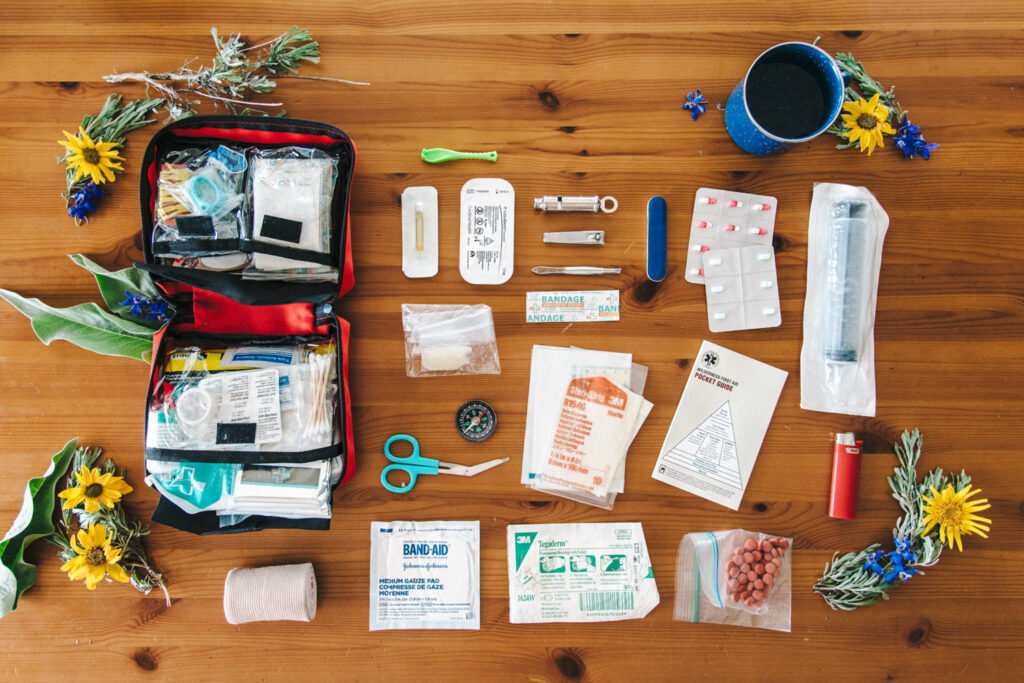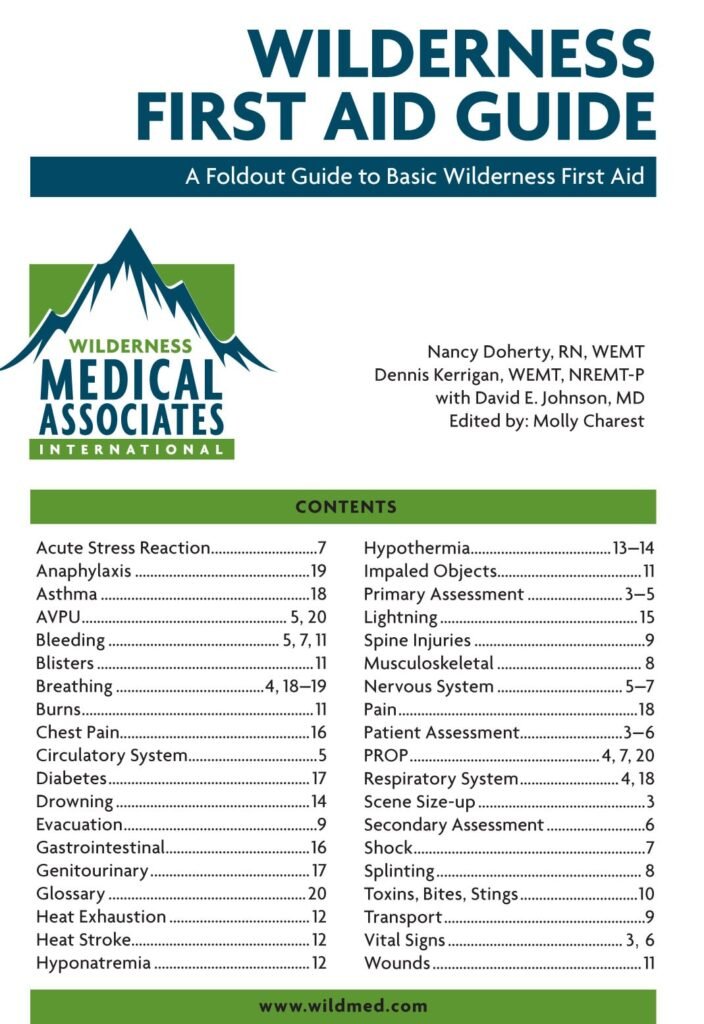When you’re out in the wilderness, it’s important to be prepared for any medical emergencies that may arise. In this article, we’ll discuss the essential skills and knowledge you need to have in order to provide first aid in a wilderness setting. Whether you’re an avid hiker, a camping enthusiast, or just someone who enjoys spending time in nature, knowing how to handle medical emergencies can make a huge difference in ensuring your safety and the safety of those around you. So, let’s dive in and learn more about wilderness first aid and medical preparedness!
In this article, you’ll discover the basics of wilderness first aid and why it’s different from traditional first aid practices. You’ll also learn about specific injuries and illnesses that can occur in a wilderness setting, such as bites and stings, fractures and sprains, heat-related illnesses, and more. We’ll provide you with practical tips and techniques on how to assess and manage these medical emergencies, as well as advice on assembling a well-stocked wilderness first aid kit. By the end of this article, you’ll have a solid understanding of wilderness first aid and be better prepared to handle unexpected situations that may occur while enjoying the great outdoors. So, let’s get started and equip yourself with the knowledge and skills to be the best first responder in the wilderness!

This image is property of she-explores.com.
Understanding Wilderness First Aid
When venturing into the great outdoors, it is crucial to be prepared for any medical emergencies that may arise. Wilderness first aid is a specialized field that focuses on providing medical care in remote locations, where access to medical facilities may be limited or non-existent. In this article, we will explore the importance of wilderness first aid, the basic principles of this practice, and common techniques used in wilderness first aid.
Importance of Wilderness First Aid
Wilderness first aid is essential for anyone involved in outdoor activities such as hiking, camping, climbing, and fishing. When exploring remote areas, help may not be readily available, and the ability to provide immediate medical care can be life-saving. Wilderness first aid is not only important for the individual’s well-being but also for the safety and comfort of their fellow adventurers.
Basic Principles of Wilderness First Aid
The principles of wilderness first aid revolve around the acronym “STOP” – Stop, Think, Observe, and Plan. The first step is to stop and assess the situation. This involves taking a moment to assess the injured person, the surroundings, and any potential risks. Next, it is important to think critically about the best course of action. This may involve administering first aid, calling for help, or making decisions about evacuation. Observing the injured person and their symptoms is crucial for determining the appropriate response. Finally, a clear plan should be formulated to ensure the best possible care is provided given the resources and circumstances.
Common Wilderness First Aid Techniques
Wilderness first aid techniques are designed to address the most common injuries and medical emergencies that can occur in remote settings. These techniques include providing first aid for cuts and wounds, managing sprains and strains, treating hypothermia and heat-related illnesses, and administering CPR and rescue breathing. The ability to effectively perform these techniques can make a significant difference in the outcome of a medical emergency in the wilderness.
Preparing for Wilderness Medical Emergencies
Before embarking on any outdoor adventure, it is crucial to assess the risks associated with wilderness activities and prepare for potential medical emergencies. This involves creating a comprehensive wilderness first aid kit and developing a communication plan for emergencies.
Assessing the Risks of Wilderness Activities
Understanding the risks associated with wilderness activities is the first step in being prepared for medical emergencies. Different activities present different risks, and it is important to be aware of these risks and take appropriate precautions. For example, hiking in rugged terrain may increase the risk of falls and sprains, while camping in bear country requires knowledge of how to handle animal encounters. By assessing the risks beforehand, you can plan and prepare accordingly.
Creating a Comprehensive Wilderness First Aid Kit
A well-stocked wilderness first aid kit is an essential component of any outdoor adventure. Your first aid kit should include items such as bandages, adhesive tape, antiseptic wipes, gauze pads, a splint, tweezers, and a thermometer. Additionally, it is important to carry any necessary medications, such as Epinephrine auto-injectors for severe allergic reactions. Your first aid kit should be tailored to the specific activities you will be participating in and the potential injuries or emergencies that may occur.
Developing a Communication Plan for Emergencies
In the event of a medical emergency in the wilderness, having a communication plan is vital. Depending on the location and circumstances, you may not have cell phone reception or access to emergency services. It is important to establish a plan that includes alternative communication methods, such as satellite phones or emergency beacons. Additionally, make sure you inform someone reliable about your itinerary and expected return time, so they can initiate a search and rescue operation if necessary.

This image is property of www.wildmed.com.
Recognizing and Responding to Wilderness Injuries
In the wilderness, injuries can occur from a variety of sources, including falls, cuts, and animal encounters. Recognizing these injuries and providing appropriate first aid is crucial for the well-being of the injured person.
Identifying Common Wilderness Injuries
Common wilderness injuries include cuts, sprains, fractures, heat-related illnesses, and altitude sickness. Cuts and wounds should be cleaned and dressed to prevent infection. Sprains and strains should be immobilized and elevated to minimize swelling. Fractures should be stabilized using improvised splints until professional medical help can be reached. Heat-related illnesses, such as heat exhaustion and heatstroke, require immediate cooling and rehydration. Altitude sickness can be recognized by symptoms such as headache, nausea, and dizziness and should be treated by descending to a lower altitude.
Providing First Aid for Cuts and Wounds
When providing first aid for cuts and wounds in the wilderness, it is important to clean the wound with clean water or antiseptic solution and cover it with a sterile dressing. If bleeding is severe, apply direct pressure to the wound using a clean cloth or your hand. Elevate the injured area if possible, to help reduce bleeding. If the wound is deep or there is a risk of infection, it is important to seek professional medical help as soon as possible.
Managing Sprains and Strains in Remote Areas
Sprains and strains are common injuries in outdoor activities. When managing these injuries in remote areas, it is important to immobilize the injured area using bandages, splints, or makeshift materials such as sticks and tape. Elevating the injured limb and applying cold packs can help reduce swelling. Resting and avoiding further stress on the injured area is crucial for proper healing. If the pain or swelling persists or if there is a suspected fracture, seek medical help as soon as possible.

This image is property of images.squarespace-cdn.com.
